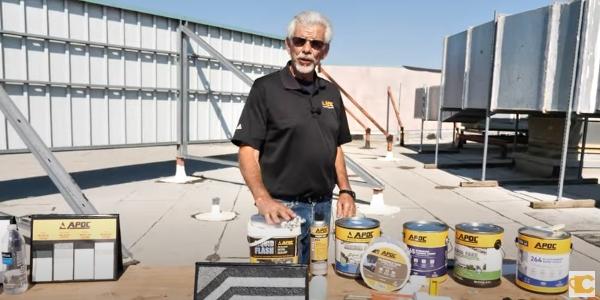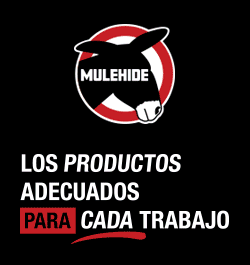Product tips for a successful roof repair
September 12, 2025 at 9:00 a.m.By Dani Sheehan.
Don’t just take our word for it – hear from an APOC representative to help you choose the best products for any roof repair.
Not sure which product to use for your project? Check out this rooftop product demonstration from an APOC representative – he breaks down some of the different sealant options they offer and highlights the importance of selecting the right product based on key factors such as weather and material type. Here are his key insights to help you make the best decision for your next roof repair or restoration.
1 – Weather conditions matter
One of the first considerations when selecting a sealant is the weather. For dry conditions, APOC 264 Elastomeric Roof Patch, a water-based acrylic, is commonly used in restoration systems. However, if there’s rain in the forecast, it’s important to opt for a solvent-based mastic, such as APOC 365 Rubberized Flashing Cement, to avoid premature sealant failure and ensure long-lasting repairs.
Unlike water-based sealants, solvent-based options like mastics are designed to withstand exposure to moisture without breaking down or washing away. This makes them ideal for emergency repairs or installations where unexpected rain or humidity could interfere with curing times. Silicone’s inherent water resistance ensures that it remains intact and continues to provide a durable seal, even under wet conditions.
2 – Silicone repair best practices
Silicone coatings and sealants are a go-to solution for many situations, but they come with specific application rules to keep in mind. The APOC representative shared, “When you’re putting the base down, it’s a water-based product. You put the base down first, let that cure completely and then come back with your silicone product.”
Additionally, if a roof already has existing silicone, repairs must also be made with silicone, because primers will not adhere to it. This is because silicone has a naturally slick and non-porous surface, preventing traditional primers from bonding effectively. Unlike other roofing materials that can absorb or grip a primer, silicone repels most coatings, requiring contractors to either apply more silicone or use a specially formulated bonding agent designed specifically for silicone adhesion.
3 – Essential tools for the job
Having the right equipment for repairs can streamline application and prevent installation errors. For example, the representative highlights having manufacturer-specific tote valves and cam locks. You might also keep APOC’s Liquid Flash on hand for a quick repair solution. He shares, “If you don’t want to carry a big bucket up four stories, put a couple of these in your nail bag. I can make multiple repairs with this and won’t have to carry a big bucket up onto the roof.”
Watch the full demonstration below for even more great tips to get the job done right with APOC products.
Learn more about APOC in their Coffee Shop Directory or visit www.apoc.com.

About Dani
Dani is a writer for The Coffee Shops and AskARoofer™. When she's not writing or researching, she's teaching yoga classes or exploring new hiking trails.























Comments
Leave a Reply
Have an account? Login to leave a comment!
Sign In